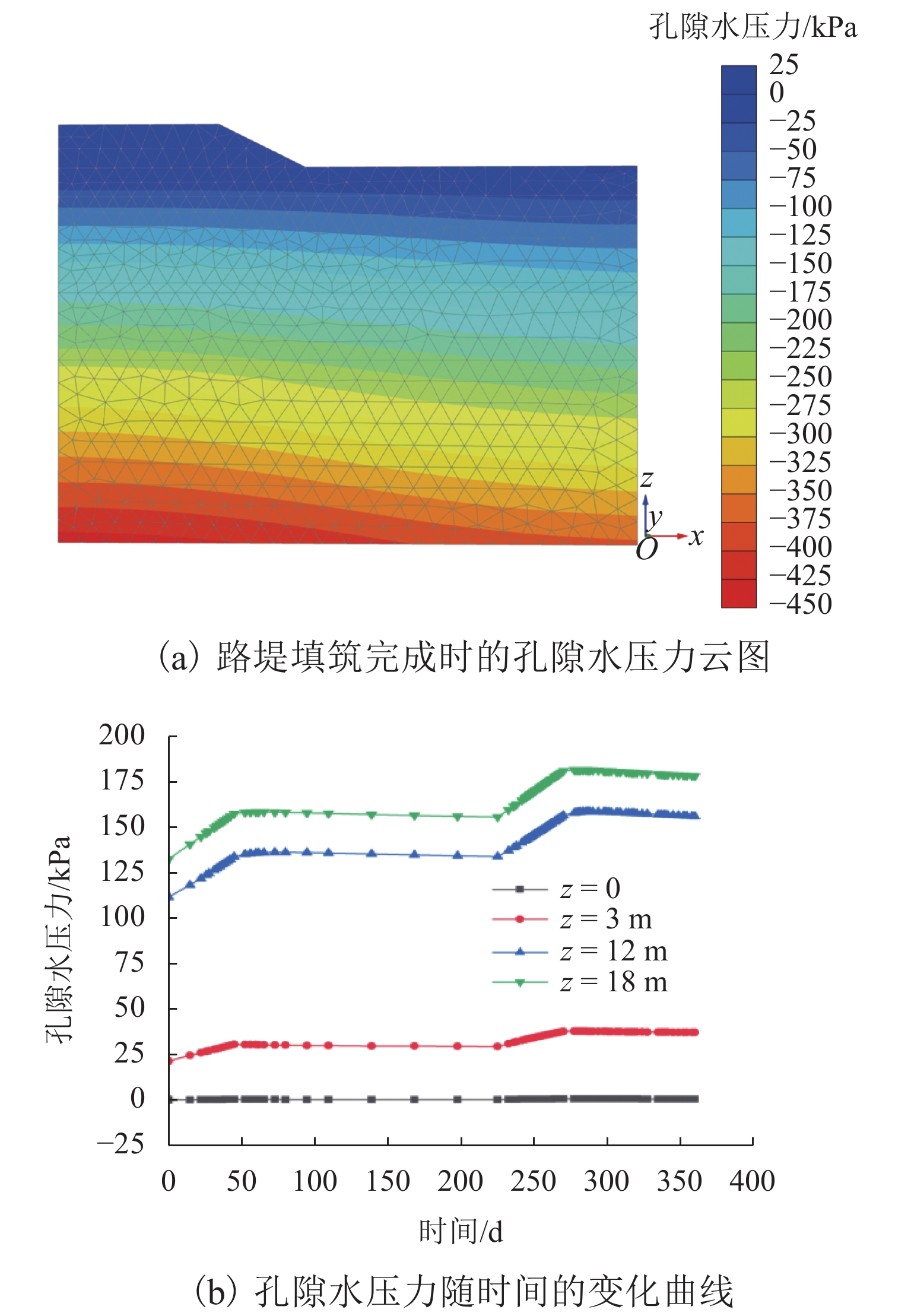Effect of Artificial Crust Layer on Pile-Soil Stress Ratio of Pipe Pile Composite Foundation
-
摘要:
为研究就地固化硬壳层对预应力管桩复合地基桩-土应力比的影响,以绍兴钱滨线泥浆池路段为背景,开展现场试验和数值模拟分析,研究路堤荷载作用下预应力管桩复合地基的受力和变形;从桩-土应力比的角度,着重探讨硬壳层对桩基复合地基承载性能的影响规律;分析路堤高度与桩帽净间距之比、桩帽宽度与桩帽净间距之比等设计参数对桩-土应力比发展的影响机制. 研究结果表明:硬壳层的存在能够有效提高桩基复合地基的承载特性;在本文试验条件下,就地固化硬壳层的预应力管桩复合地基最大水平位移发生在地表以下5~6 m处,区别于传统桩基复合地基的土体水平位移沿深度逐渐降低的规律;桩-土应力比在23~37,高于传统桩基复合地基.
Abstract:In order to study the influence of artificial crust layer formed by in-situ solidified on the pile-soil stress ratio of prestressed pipe pile composite foundation, field experiments and numerical simulation analysis were carried out based on the mud pit section of Qianqing-Binhai highway in Shaoxing. On this basis, both the stress response and deformation of prestressed pipe pile composite foundation under embankment load were studied. From the pile-soil stress ratio, the influence of artificial crust layer on the bearing performance of pile composite foundation was emphatically discussed. In addition, the influence mechanism of design parameters such as the ratio of embankment height to net distance between pile caps and the ratio of pile cap width to net distance between pile caps on the development of pile-soil stress ratio were preliminarily studied. It shows that artificial crust layer can improve the bearing capacity. Under the experimental conditions, the maximum horizontal displacement of artificial crust layer combined prestressed pipe pile composite foundation occurs 5~6 m below the ground surface, which is different from traditional composite foundation decreases gradually along the depth. The pile-soil stress ratio is between 23 and 37, which is higher than that of traditional pile composite foundation.
-
我国软土分布广泛,地下工程及河道清淤等工程建设过程中会产生大量淤泥等废弃土(又称渣土). 废弃土外运、堆放占用大量土地资源,同时还存在装运困难、污染环境等问题. 桩基复合地基是软土地基加固的有效方法之一,可有效减小沉降、提高路堤稳定性[1-2]. 设置砂石垫层、减小桩间距和增加桩帽面积等均是保证桩、土共同承担荷载的有效手段[3]. 就地固化技术是基于就地搅拌设备将固化剂和软土进行原位搅拌,在一定范围内提高土体强度,形成硬壳层的软土地基处理手段[4-5]. 含硬壳层的桩基复合地基将硬壳层和桩视为整体,共同承担荷载,起到疏桩效果;硬壳层整体性好,对桩有水平约束作用,提高了桩体稳定性. 同时,硬壳层具有应力扩散作用,降低了地基土内应力传递,改善了荷载传递关系. 与传统桩基复合地基相比,就地固化硬壳层可以替代传统褥垫层,缓解部分地区砂石料取材难、费用高等问题[6].
相关学者针对固化剂种类、养护龄期等对含硬壳层的桩基复合地基加固效果的影响开展了相关研究,并取得了一些有益成果[6-7]. 桩-土应力比反映了桩基复合地基中桩、桩间土和褥垫层的相互协调关系,对承载力确定和沉降计算具有重要意义[8-9]. 桩基复合地基设计时,桩-土应力比是调整桩、土荷载分担和沉降分析的重要参数[10-14]. 目前,有关学者对传统桩基复合地基中的桩-土应力比展开了研究,陆清元等[9]在荷载传递理论的基础上,结合桩-土-垫层的压缩变形协调方程,得到了桩-土应力比的解析表达式;曹卫平等[15-16]将传统褥垫层中水平加筋体的变形视为二次曲线,桩和桩间土视为弹簧,根据最小势能原理计算了桩-土应力比. 而就地固化硬壳层复合地基与传统桩基复合地基不同,硬壳层类似于板体且具有一定强度,含硬壳层的桩基复合地基中桩体、硬壳层视为整体,需考虑桩间土在荷载传递过程中的作用[6,17-20].
因此,本文开展就地固化硬壳层结合预应力管桩承载性能现场试验和数值模拟分析,研究路堤荷载作用下土体沉降、水平位移、孔隙水压力和桩顶及桩间土应力变化规律;着重探讨硬壳层对桩-土应力比的影响规律;初步研究路堤高度与桩帽净间距之比(h/s)、桩帽宽度与净间距之比(b/s)等参数对桩-土应力比发展的影响机制.
1. 现场试验
1.1 工程概况
试验依托绍兴钱滨线公路工程泥浆池路段,泥浆池长约295 m,宽约303 m,总占地约9.3×104 m2. 路线范围内泥浆池厚10~12 m,含水率68.8%~91.5%、压缩性大、侧壁摩阻力100~600 Pa、锥尖阻力10~50 kPa,土层物理力学性质见表1.
表 1 试验段土层的基本物理力学指标Table 1. Basic physical and mechanical indexes of soil layer土层 厚度/m 天然湿密度/
(g•cm−3)天然
孔隙比黏聚力/kPa 内摩擦
角/(°)弹性模量/
MPa泊松比 渗透率/
(×10−4 m•d−1)路堤 4.5 2.0 38.0 35.00 0.30 1000.0 土工格栅 3500.00 0.30 桩 80000.00 0.15 硬壳层 3.0 1.85 0.380 300.0 16.0 300.00 0.30 1.0 泥浆 9.0 1.69 2.060 10.0 10.1 2.50 0.35 1.7 粉土 1.0 1.79 0.902 8.2 29.2 4.46 0.35 4.3 粉砂 7.0 1.79 0.735 6.4 30.9 6.32 0.35 43.2 淤泥质黏土 19.0 1.78 1.212 15.0 3.7 2.73 0.35 4.3 1.2 试验方案
采用就地固化结合预应力管桩进行泥浆池地基加固处理. 如图1所示,布设土压力盒、测斜管、沉降板和孔隙水压力计等测试元件. 考虑到泥浆池两侧填挖会对路堤稳定性造成影响,沿坡脚向外15 m范围内设置2排水泥搅拌桩和抛石护脚.
1) 就地固化硬壳层:固化范围为路堤宽度及从坡脚向外延伸15 m,采用9%的粉剂固化剂(水泥、矿渣微粉及少量稳定剂)对地表下3 m内的土层进行处理.
2) 水泥搅拌桩:桩长16 m,桩径0.7 m ,水泥掺量为20%,水灰比0.4,邻桩搭接0.1 m.
3) 预应力管桩:桩长16 m,桩径0.4 m,桩帽采用C30混凝土,尺寸为1.5 m × 1.5 m × 0.35 m. 路堤范围内桩间距为2.50 m,方形布置;坡脚外15.00 m内桩间距为3.00 m,梅花形布置(图1(b)).
2. 数值模拟
利用PLAXIS有限元分析软件,对就地固化结合预应力管桩复合地基的承载特性影响规律进行数值分析,同时,对路堤填筑过程进行模拟分析. 本文未考虑车辆荷载和其他外加荷载的影响.
2.1 本构模型
1) 本构模型:桩、土工格栅和硬壳层采用弹性模型,路堤填料和土层采用土体硬化模型.
2) 接触理论:桩-土界面的接触在数值模拟中尤为重要[19-23],本文通过界面单元模拟桩与土的相互作用,采用Rinter反映接触面材料与土的接触界面强度.
2.2 模型的建立
1) 模型建立:模型的网格和边界条件如图2所示. 路基关于中线对称分布,为简化模型,取半幅路堤进行建模. 同时,为减小边界效应,模型横向长度为60 m,深度39 m.
2) 参数选取:地基土层存在分层现象,且人工硬壳层与软土差异较大,因此,通过设置不同的材料属性模拟地基的分层特性,材料参数见表1.
3) 荷载及边界条件:采用分步施工模拟路堤的逐层填筑,根据现场的填筑和固结时间确定各施工步的间隔时间. 由于模型以路堤中线对称建立,需将左侧(xmin)的渗流边界关闭,避免发生水平方向的渗流,将ymin、ymax、zmin渗流边界关闭.
2.3 土体变形规律分析
2.3.1 孔隙水压力
路堤填筑过程中的孔隙水压力变化如图3所示. 由图3(b)可知:孔隙水压力消散较慢,是因为人工硬壳层具有应力扩散作用,降低了地基土内应力传递,地基固结速度较慢;孔隙水压力随地基深度的增大呈增大趋势,主要是因为桩、土之间的沉降差异使得路堤荷载和桩体上部的摩阻力通过桩传递到桩端土层;桩端土层距排水面较远,孔隙水压力较路堤表层难以消散. 以上规律在文献[7,12]中得到了验证.
2.3.2 竖向沉降
通过有限元分析得到的路堤竖向沉降如图4所示. 由图可知:土体表层沉降随路堤填筑高度的增大而增大,由于硬壳层和预应力管桩对土体的加固作用,填筑完成后的土体沉降变化减缓并逐渐趋于稳定. 路堤表面的累计沉降约为246.3 mm,约80%的土体沉降发生在填筑期间.
地基沉降随深度的变化规律曲线如图5所示. 由图可知:人工硬壳层具有固化作用,即硬壳层(0~3 m)的土体沉降趋近于0;孔隙水压力随深度逐渐增大,有效应力则逐渐减小,因此,地基深度3~10 m的土体沉降变化明显且随深度逐渐减小;地基深度10~24 m的沉降变化较小. 由此表明,沉降主要由土体压缩造成,深层土体的压缩变形较小,该规律与文献[11]结果类似.
2.3.3 水平位移
不同时间下路堤坡脚处的水平位移曲线如图6所示. 由图可知:不同深度处的桩间土受力不均,土体水平位移随深度先增大后减小. 这是因为:路堤的大部分荷载由桩传递到桩端持力层,深层地基的桩间土所受荷载相对较小;硬壳层(0~3 m)使得路堤荷载均匀分散到硬壳层底部,降低了硬壳层内的水平作用力. 地基中部存在孔隙水压力,且硬壳层对该范围内的桩间土产生了侧向应力,压缩过程中土体产生侧向变形,因此,最大水平位移发生在地基深度5~6 m. 坡脚处的最大水平位移随路堤填筑呈增大趋势且增速变化显著,主要是因为地基在路堤填筑荷载和自重作用下被加固,地基水平位移增量近似于沉降增量[24]. 随着路堤填筑,地基内部产生局部破坏及固结状态的变化使沉降骤增,从而引起水平位移突变.
路堤坡脚处地基最大水平位移和中线处地基最大竖向沉降的比值可以反映路堤稳定性,当比值不超过0.5时结构稳定[14]. 结合图5和图6可知:当路堤填筑2.5 m时,本文工况下最大水平位移与最大竖向沉降之比为0.1,由此说明硬壳层能够有效保证路堤的稳定性.
2.4 桩、土应力分析
桩顶和桩间土应力随路堤填筑的变化曲线如图7所示. 由图可知:桩-土应力比在23~37波动,填筑初期的桩-土应力比为24.5,经固结稳定后土拱效应进一步发挥,桩-土应力比填筑初期提高了5%. 桩顶和桩间土应力随时间均呈不同程度的增长,但路堤填筑和固结期间的增速存在差异. 整体表现为:填筑期间的桩顶和桩间土应力增长较快,桩-土应力比呈增大趋势;固结期间的桩顶和桩间土应力增长相对平缓,桩-土应力比呈现先缓慢减小后趋于稳定的趋势. 主要原因在于:桩、土存在刚度差异,桩和土的沉降差异随路堤填筑而增大,加载瞬间的桩顶土压力骤增,桩-土应力比呈现增大趋势;固结期间的桩和土沉降差异较小,桩、土共同承载荷载,桩-土应力比减小;沉降随时间逐渐趋于稳定,当桩和土承载的荷载到一定范围时,桩顶和桩间土应力增速相近,桩-土应力比趋于稳定.
不同工况(表2)下桩-土应力比变化曲线如图8所示. 由图可知:传统桩基复合地基和就地固化结合预应力管桩的桩-土应力比变化规律一致,但后者桩-土应力比较高. 这主要是因为硬壳层促进硬壳层、桩和土体共同承担荷载,有效减小了整体沉降,使桩顶土应力得到了提高.
表 2 施工参数对比表Table 2. Comparison of construction parameters工况 来源 桩长/m 桩径/m 桩间距/m 桩间土
应力/kPa桩顶土
应力/kPa桩-土
应力比褥垫层/硬壳层 1 本文 16.0 0.40 2.5 88.3 2785.8 31.6 3.0 m 硬壳层 2 文献[6] 16.0 0.40 2.5 90.8 2851.1 31.4 3.0 m 硬壳层 3 文献[7] 16.0 0.40 3.0 97.0 3073.8 31.7 3.0 m 硬壳层 4 文献[12] 20.0 0.40 2.0 18.2 375.0 20.6 加筋垫层(土工格栅抗拉
模量1000 kN/m,垫层和整平层
压缩模量 25 MPa)5 2.5 46.6 289.9 6.2 6 3.0 24.3 381.1 15.7 7 文献[12] 14.0 0.40 2.0 24.1 281.0 11.7 加筋垫层(土工格栅抗
拉模量 600 kN/m,垫层和整
平层压缩模量 25 MPa)8 0.30 2.5 40.1 292.2 7.3 9 文献[12] 13.5 0.48 2.7 30.4 350.8 11.5 10 2.2 20.9 269.3 12.9 11 文献[13] 7.0~8.0 0.50 1.2 3.8 0.5 m 砂性土 12 5.0 0.5 m 碎石垫层 13 文献[14] 16.0 1.00 3.0 58.9 624.9 8.9 0.5 m 碎石垫层+土工格栅
(抗拉模量 1180 kN/m)14 文献[20] 3.0~6.0 0.50 1.6 115.1 177.3 1.5 0.5 m 碎石垫层+土工格栅
(抗拉模量 300 kN/m)由表2可知:Y形桩的侧表面积和摩阻力均比圆形桩大,相同混凝土用量下Y形桩的承载力较大;Y形桩的桩土沉降差异为1.0~3.5 cm,圆形桩为2.8~5.4 cm,使得桩基复合地基中Y形桩的桩-土应力比圆形桩小[12]. 粒径较小的垫层材料流动性较高,可以将由桩顶承担的部分荷载向桩间土传递,因此,桩-土应力比较小,即桩-土应力比随垫层材料粒径的增大而增大[13]. 当加筋材料的抗拉模量较大时,提兜作用显著,桩间土承担的路堤荷载向桩转移,桩顶土应力增大. 因此,桩顶和桩间土应力的分布受加筋材料影响[10],桩-土应力比随加筋材料抗拉模量的增大而增大[12,16]. 成桩工艺对桩-土应力比也有影响[14,20],预应力管桩刚度较大,路堤加载时桩体沉降较小,可承担大部分的荷载,因此,桩-土应力比水泥粉煤灰碎石(CFG)桩大.
既有研究表明,土拱效应的发挥与垫层材料粒径、桩型、加筋材料性质、成桩工艺等因素有关,不同条件下桩-土应力比表现为不同的变化特性,相应的施工参数见表2.
3. 参数分析
3.1 参数影响程度分析
参数μ取某一定值β 时,得到桩-土应力比与时间的关系曲线,该曲线的桩-土应力比最大值记为n,相应的桩-土应力比最大值集合记为{\boldsymbol{N}}_m = ( {n_{m1}},{n_{m2}}, \cdots , {n_{mn}} ),得到各参数不同取值时的影响程度 {\lambda _m} .
将参数范围内的 {\lambda _m} 按取值个数加权平均,得到影响程度加权平均值 \lambda ,如式(1). 参数影响程度如表3.
表 3 参数影响程度Table 3. Influence degree of parameters影响因素 影响程度/% 结论 h/s 108.6 高(+) b/s 63.0 高(+) 注:表中“ + ”表示积极影响. \lambda = \frac{{\displaystyle \sum\limits {{\lambda _m}{\alpha _m}} }}{{\displaystyle \sum\limits {{\alpha _m}} }} \text{,} (1) 式中:{\alpha _m}为 {{\boldsymbol{N}}_m} 中的元素个数.
表3表明,路堤填筑高度与桩帽净间距之比(h/s)和桩帽宽度与桩帽净间距之比(b/s)对桩-土应力比的影响较大,与既有研究结论一致[15-16,18,25]. 因此,针对h/s和b/s对桩-土应力比的影响规律展开分析.
3.2 h/s对桩-土应力比的影响规律分析
桩-土应力比随h/s变化规律如图9所示. 由图可知:桩-土应力比随h/s的增大而增大. 这主要是因为h/s随着路堤填筑而增大,逐渐形成完整的土拱;土拱下方的桩间土沉降较大,路堤荷载逐渐向桩传递,桩-土应力比呈现增大趋势;在h/s相同时,桩承担的荷载随硬壳层厚度呈增大趋势,桩-土应力比也随之增大.
3.3 b/s对桩-土应力比的影响规律分析
桩-土应力比与b/s的变化规律如图10所示. 由图可知:桩-土应力比随b/s的增大整体呈增大趋势. 相同作用范围内,桩承担的荷载随桩帽宽度的增大而增大;当b/s增大到一定范围时,桩承担的荷载趋近于极限承载力,路堤荷载开始向桩间土转移,桩-土应力比增速逐渐趋于平缓. h/s和b/s相等时,就地固化结合预应力管桩的桩-土应力比高于传统桩基复合地基,主要是因为硬壳层降低了沉降、提高了桩顶土应力.
4. 结 论
依托绍兴钱滨线公路工程,开展了就地固化结合预应力管桩处理泥浆池路段的现场试验和数值模拟分析,着重探讨了硬壳层的存在对桩-土应力比的影响规律,得到以下结论:
1) 孔隙水压力随地基深度的增大而增大,硬壳层的存在使得孔隙水压力消散变慢、降低了地基的固结速度.
2) 硬壳层具有侧向约束作用,含硬壳层的桩基复合地基水平位移随深度呈现先增大后减小的趋势;本文试验条件下,最大水平位移发生在地表以下5~6 m处,区别于传统桩基复合地基的土体水平位移沿深度逐渐降低的规律.
3) 硬壳层的存在促进硬壳层、桩和土体共同承担荷载,含硬壳层的桩基复合地基桩-土应力比在23~37,高于传统桩基复合地基;且桩-土应力比随着路堤填筑而增大,并逐渐趋于平稳.
-
表 1 试验段土层的基本物理力学指标
Table 1. Basic physical and mechanical indexes of soil layer
土层 厚度/m 天然湿密度/
(g•cm−3)天然
孔隙比黏聚力/kPa 内摩擦
角/(°)弹性模量/
MPa泊松比 渗透率/
(×10−4 m•d−1)路堤 4.5 2.0 38.0 35.00 0.30 1000.0 土工格栅 3500.00 0.30 桩 80000.00 0.15 硬壳层 3.0 1.85 0.380 300.0 16.0 300.00 0.30 1.0 泥浆 9.0 1.69 2.060 10.0 10.1 2.50 0.35 1.7 粉土 1.0 1.79 0.902 8.2 29.2 4.46 0.35 4.3 粉砂 7.0 1.79 0.735 6.4 30.9 6.32 0.35 43.2 淤泥质黏土 19.0 1.78 1.212 15.0 3.7 2.73 0.35 4.3 表 2 施工参数对比表
Table 2. Comparison of construction parameters
工况 来源 桩长/m 桩径/m 桩间距/m 桩间土
应力/kPa桩顶土
应力/kPa桩-土
应力比褥垫层/硬壳层 1 本文 16.0 0.40 2.5 88.3 2785.8 31.6 3.0 m 硬壳层 2 文献[6] 16.0 0.40 2.5 90.8 2851.1 31.4 3.0 m 硬壳层 3 文献[7] 16.0 0.40 3.0 97.0 3073.8 31.7 3.0 m 硬壳层 4 文献[12] 20.0 0.40 2.0 18.2 375.0 20.6 加筋垫层(土工格栅抗拉
模量1000 kN/m,垫层和整平层
压缩模量 25 MPa)5 2.5 46.6 289.9 6.2 6 3.0 24.3 381.1 15.7 7 文献[12] 14.0 0.40 2.0 24.1 281.0 11.7 加筋垫层(土工格栅抗
拉模量 600 kN/m,垫层和整
平层压缩模量 25 MPa)8 0.30 2.5 40.1 292.2 7.3 9 文献[12] 13.5 0.48 2.7 30.4 350.8 11.5 10 2.2 20.9 269.3 12.9 11 文献[13] 7.0~8.0 0.50 1.2 3.8 0.5 m 砂性土 12 5.0 0.5 m 碎石垫层 13 文献[14] 16.0 1.00 3.0 58.9 624.9 8.9 0.5 m 碎石垫层+土工格栅
(抗拉模量 1180 kN/m)14 文献[20] 3.0~6.0 0.50 1.6 115.1 177.3 1.5 0.5 m 碎石垫层+土工格栅
(抗拉模量 300 kN/m)表 3 参数影响程度
Table 3. Influence degree of parameters
影响因素 影响程度/% 结论 h/s 108.6 高(+) b/s 63.0 高(+) 注:表中“ + ”表示积极影响. -
[1] 刘汉龙,赵明华. 地基处理研究进展[J]. 土木工程学报,2016,49(1): 96-115.LIU Hanlong, ZHAO Minghua. Review of ground improvement technical and its application in China[J]. China Civil Engineering Journal, 2016, 49(1): 96-115. [2] 郑刚,龚晓南,谢永利,等. 地基处理技术发展综述[J]. 土木工程学报,2012,45(2): 127-146.ZHENG Gang, GONG Xiaonan, XIE Yongli, et al. State-of-the-art techniques for ground improvement in China[J]. China Civil Engineering Journal, 2012, 45(2): 127-146. [3] HAN J. Recent research and development of ground column technologies[J]. Proceedings of the Institution of Civil Engineers-Ground Improvement, 2015, 168(4): 246-264. doi: 10.1680/grim.13.00016 [4] CHEN Y H, GAO S H, CHEN L, et al. Laboratory and field test study on the improvement of marine clay slurry by in situ solidification[J]. Marine Georesources & Geotechnology, 2019, 37(6): 695-703. [5] ISHIKURA R, YASUFUKU N, BROWN M J. An estimation method for predicting final consolidation settlement of ground improved by floating soil cement columns[J]. Soils and Foundations, 2016, 56(2): 213-227. doi: 10.1016/j.sandf.2016.02.005 [6] 王颖. 道路软基就地固化形成硬壳层的承载和变形特性研究[D]. 南京: 河海大学, 2016. [7] 李肖. 跨越大面积深厚超软土路堤变形机理及设计方法研究[D]. 淮南: 安徽理工大学, 2019. [8] 邵国霞,苏谦,尹紫红,等. 不同垫层下管桩复合地基现场对比试验研究[J]. 西南交通大学学报,2018,53(2): 279-285.SHAO Guoxia, SU Qian, YIN Zihong, et al. Field comparative experimental study on pipe pile composite foundation under different cushion[J]. Journal of Southwest Jiaotong University, 2018, 53(2): 279-285. [9] 陆清元,罗强,蒋良潍. 路堤下刚性桩复合地基桩-土应力比计算[J]. 岩土力学,2018,39(39): 2473-2482.LU Qingyuan, LUO Qiang, JIANG Liangwei. Calculation of pile-soil stress ratio of rigid pile composite foundation under embankment[J]. Rock and Soil Mechanics, 2018, 39(39): 2473-2482. [10] CHEN Y M, CAO W P, CHEN R P. An experimental investigation of soil arching within basal reinforced and unreinforced piled embankments[J]. Geotextiles and Geomembranes, 2008, 26(2): 164-174. doi: 10.1016/j.geotexmem.2007.05.004 [11] ZHAO M, CAO W P. An analysis of pile-soil interaction under embankment load[J]. Applied Mechanics and Materials, 2014, 488/489: 458-461. doi: 10.4028/www.scientific.net/AMM.488-489.458 [12] CHEN R P, XU Z Z, CHEN Y M, et al. Field tests on pile-supported embankments over soft ground[J]. Journal of Geotechnical and Geoenvironmental Engineering, 2010, 136(6): 777-785. doi: 10.1061/(ASCE)GT.1943-5606.0000295 [13] 刘吉福. 路堤下复合地基桩、土应力比分析[J]. 岩石力学与工程学报,2003,22(4): 674-677.LIU Jifu. Analysis on pile-soil stress ratio for composite ground under embankment[J]. Chinese Journal of Rock Mechanics and Engineering, 2003, 22(4): 674-677. [14] 费康,刘汉龙. 桩承式加筋路堤的现场试验及数值分析[J]. 岩土力学,2009,30(4): 1004-1012.FEI Kang, LIU Hanlong. Field test study and numerical analysis of a geogrid-reinforced and pile-supported embankment[J]. Rock and Soil Mechanics, 2009, 30(4): 1004-1012. [15] 曹卫平,陈云敏,陈仁朋. 考虑路堤填筑过程与地基土固结相耦合的桩承式路堤土拱效应分析[J]. 岩石力学与工程学报,2008,27(8): 1610-1617.CAO Weiping, CHEN Yunmin, CHEN Renpeng. Analysis of soil arching in piled embankments considering coupled effect of embankment filling and soil consolidation[J]. Chinese Journal of Rock Mechanics and Engineering, 2008, 27(8): 1610-1617. [16] 曹卫平,胡伟伟. 桩承式加筋路堤三维土拱效应试验研究[J]. 岩土力学,2014,35(2): 351-358. doi: 10.16285/j.rsm.2014.02.027CAO Weiping, HU Weiwei. Experimental study of 3D soil arching in piled reinforced embankments[J]. Rock and Soil Mechanics, 2014, 35(2): 351-358. doi: 10.16285/j.rsm.2014.02.027 [17] ROWE R K, LI A L. Geosynthetic-reinforced embankments over soft foundations[J]. Geosynthetics International, 2005, 12(1): 50-85. doi: 10.1680/gein.2005.12.1.50 [18] LIU W Z, QU S, ZHANG H, et al. An integrated method for analyzing load transfer in geosynthetic-reinforced and pile-supported embankment[J]. KSCE Journal of Civil Engineering, 2017, 21(3): 687-702. doi: 10.1007/s12205-016-0605-3 [19] 费康,王军军,陈毅. 桩承式路堤土拱效应的试验和数值研究[J]. 岩土力学,2011,32(7): 1975-1983. doi: 10.3969/j.issn.1000-7598.2011.07.010FEI Kang, WANG Junjun, CHEN Yi. Experimental and numerical studies of soil arching in piled embankment[J]. Rock and Soil Mechanics, 2011, 32(7): 1975-1983. doi: 10.3969/j.issn.1000-7598.2011.07.010 [20] CAO W Z, ZHENG J J, ZHANG J, et al. Field test of a geogrid-reinforced and floating pile-supported embankment[J]. Geosynthetics International, 2016, 23(5): 348-361. doi: 10.1680/jgein.16.00002 [21] BOURGEOIS E, BUHAN P, HASSEN G. Settlement analysis of piled-raft foundations by means of a multiphase model accounting for soil-pile interactions[J]. Computers and Geotechnics, 2012, 46: 26-38. doi: 10.1016/j.compgeo.2012.05.015 [22] LENG J, GABR M A. Numerical analysis of stress-deformation response in reinforced unpaved road sections[J]. Geosynthetics International, 2005, 12(2): 111-119. doi: 10.1680/gein.2005.12.2.111 [23] LEE C J, BOLTON M D, AL-TABBAA A. Numerical modelling of group effects on the distribution of dragloads in pile foundations[J]. Géotechnique, 2002, 52(5): 325-335. [24] TAVENAS F, MIEUSSENS C, BOURGES F. Lateral displacements in clay foundations under embankments[J]. Canadian Geotechnical Journal, 1979, 16(3): 532-550. doi: 10.1139/t79-059 [25] HUANG J, HAN J. Two-dimensional parametric study of geosynthetic-reinforced column-supported embankments by coupled hydraulic and mechanical modeling[J]. Computers and Geotechnics, 2010, 37(5): 638-648. doi: 10.1016/j.compgeo.2010.04.002 期刊类型引用(2)
1. 张帅,王瑞春,朱绍东,郑媛媛,曹玉鹏. 固化土-微型桩复合地基桩-土应力比分析. 土木工程与管理学报. 2025(01): 27-33 .  百度学术
百度学术2. 郑昆鹏,边晓亚,魏想. 上覆硬壳层软土地基预制桩挤土效应分析. 南阳理工学院学报. 2023(02): 79-83 .  百度学术
百度学术其他类型引用(2)
-





 下载:
下载:










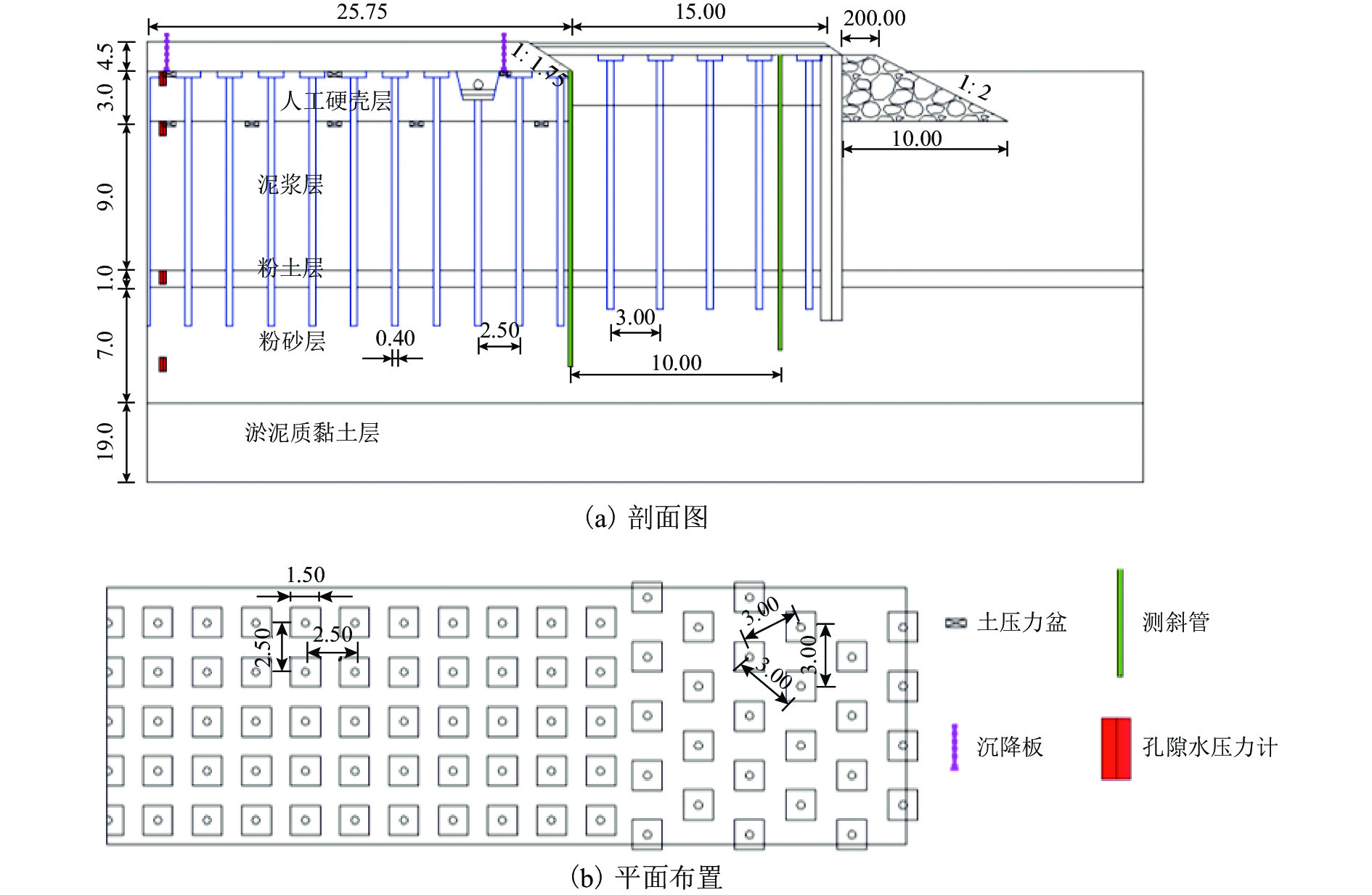
 下载:
下载:
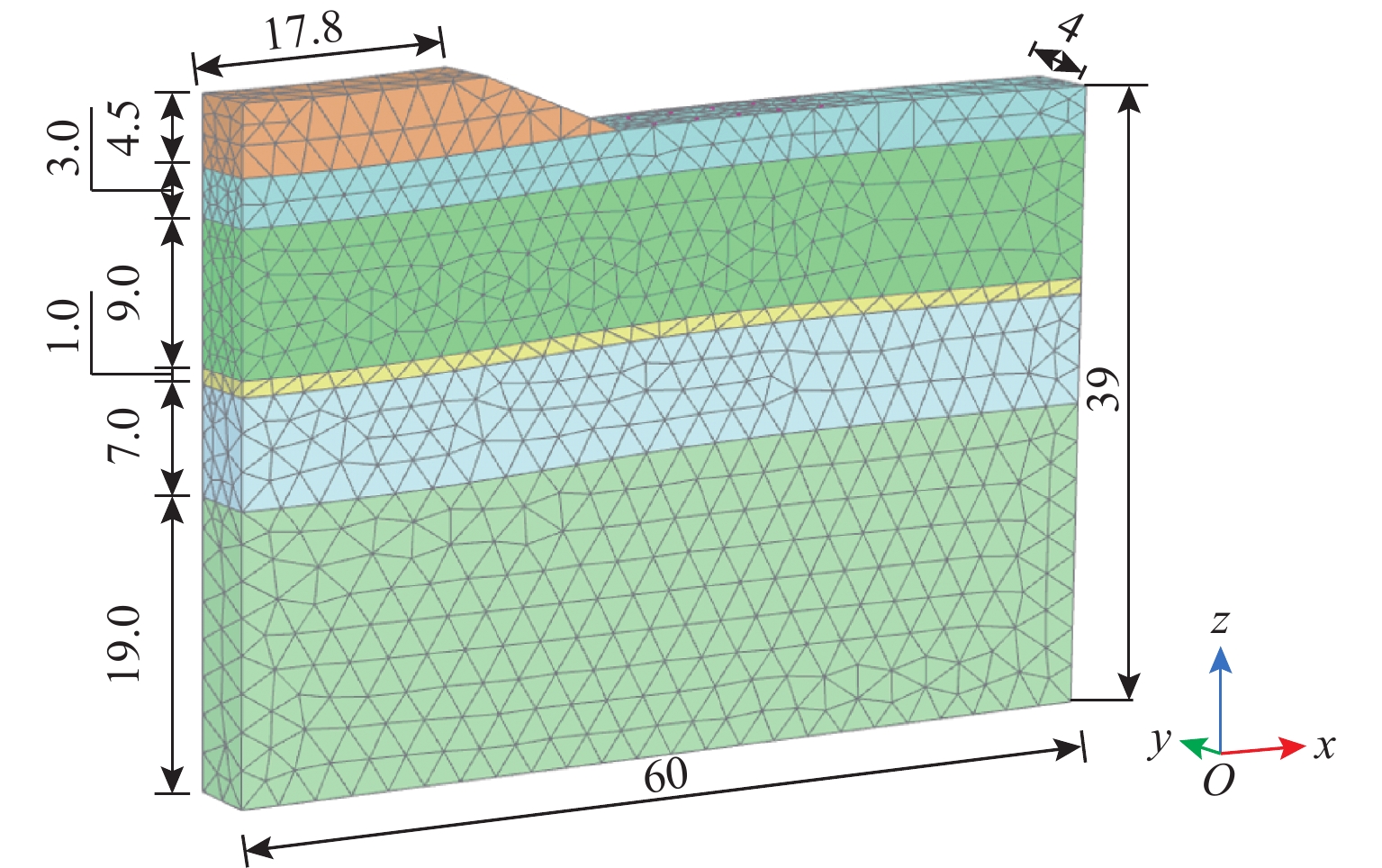

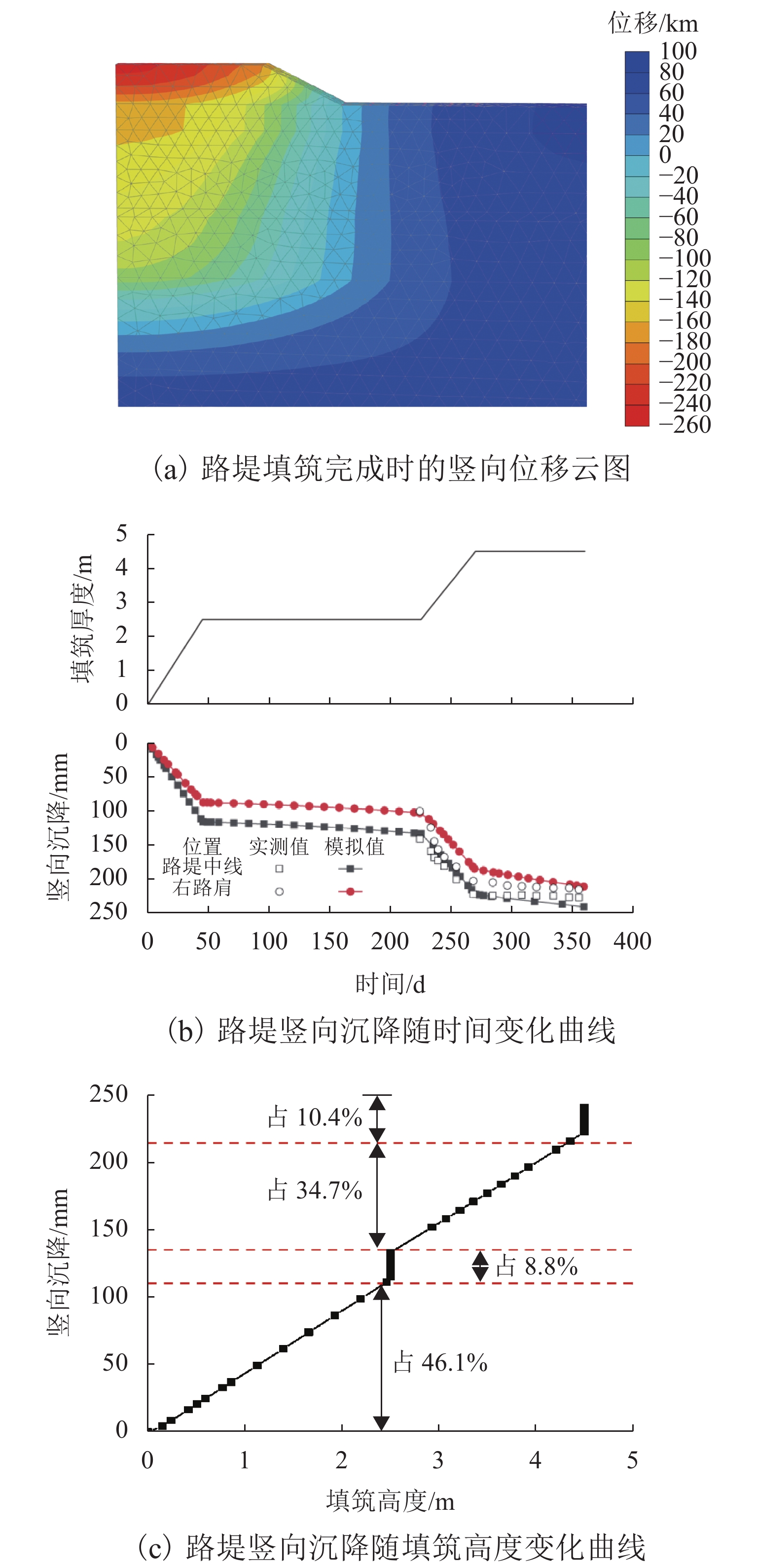
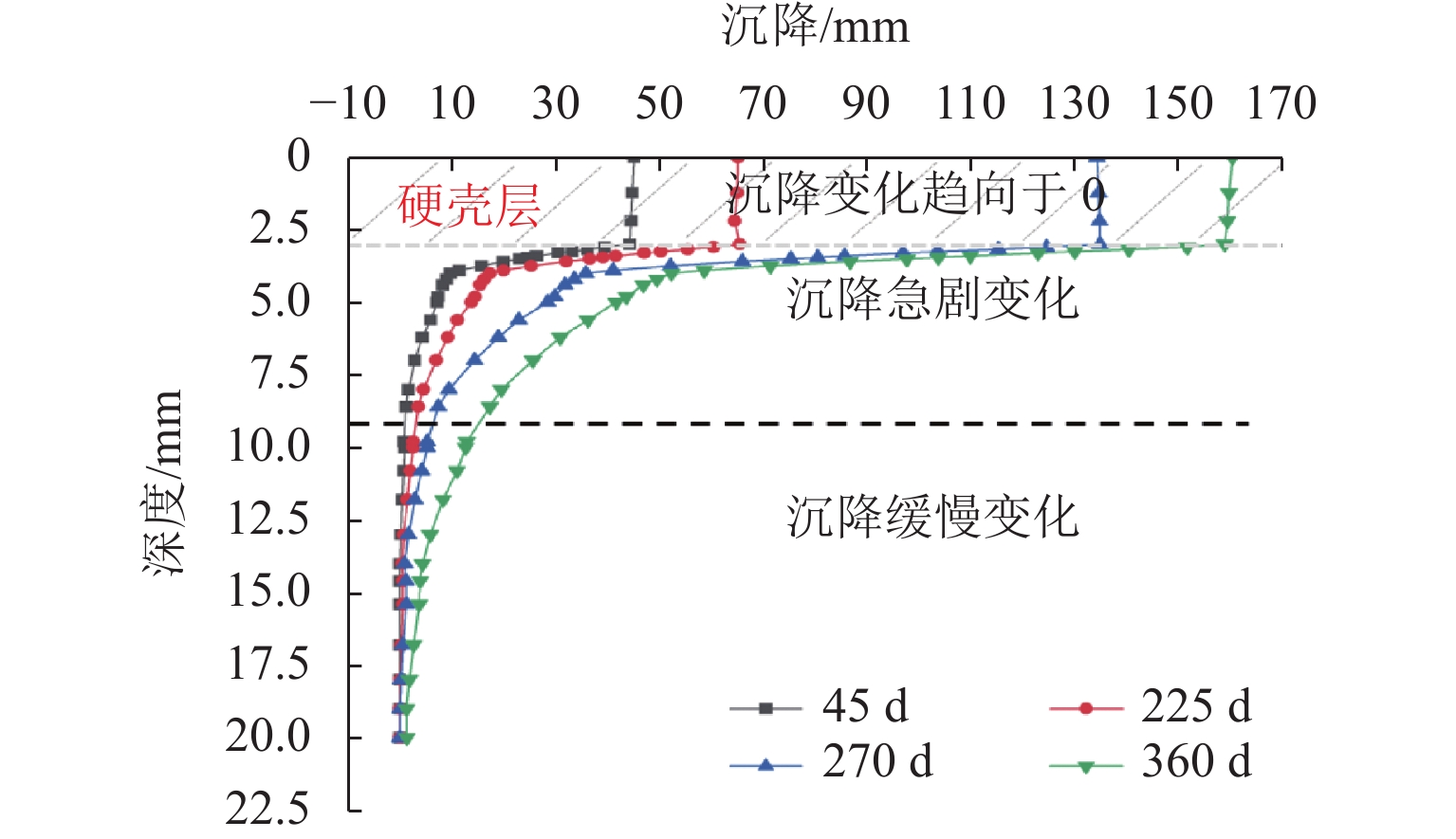
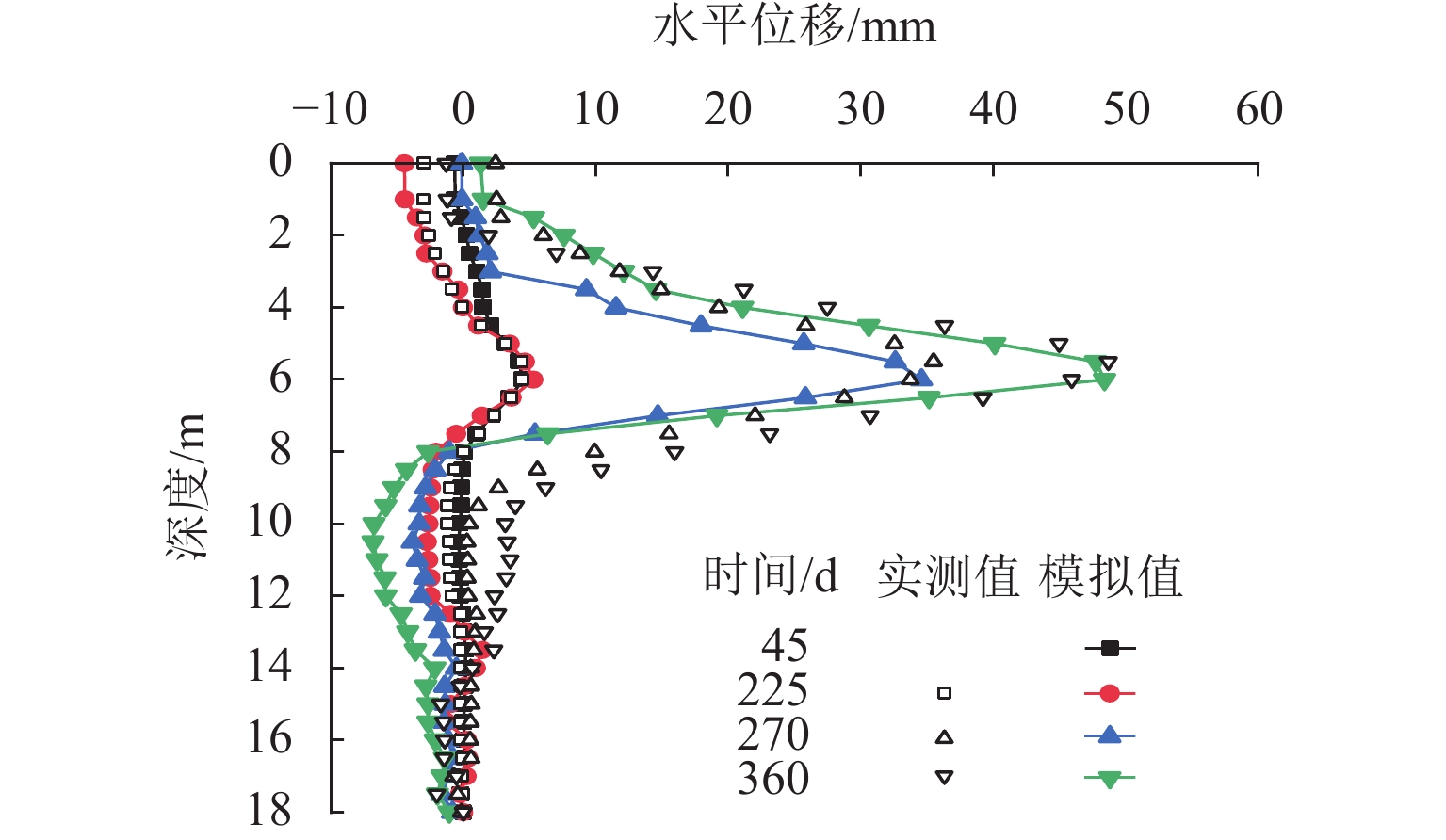
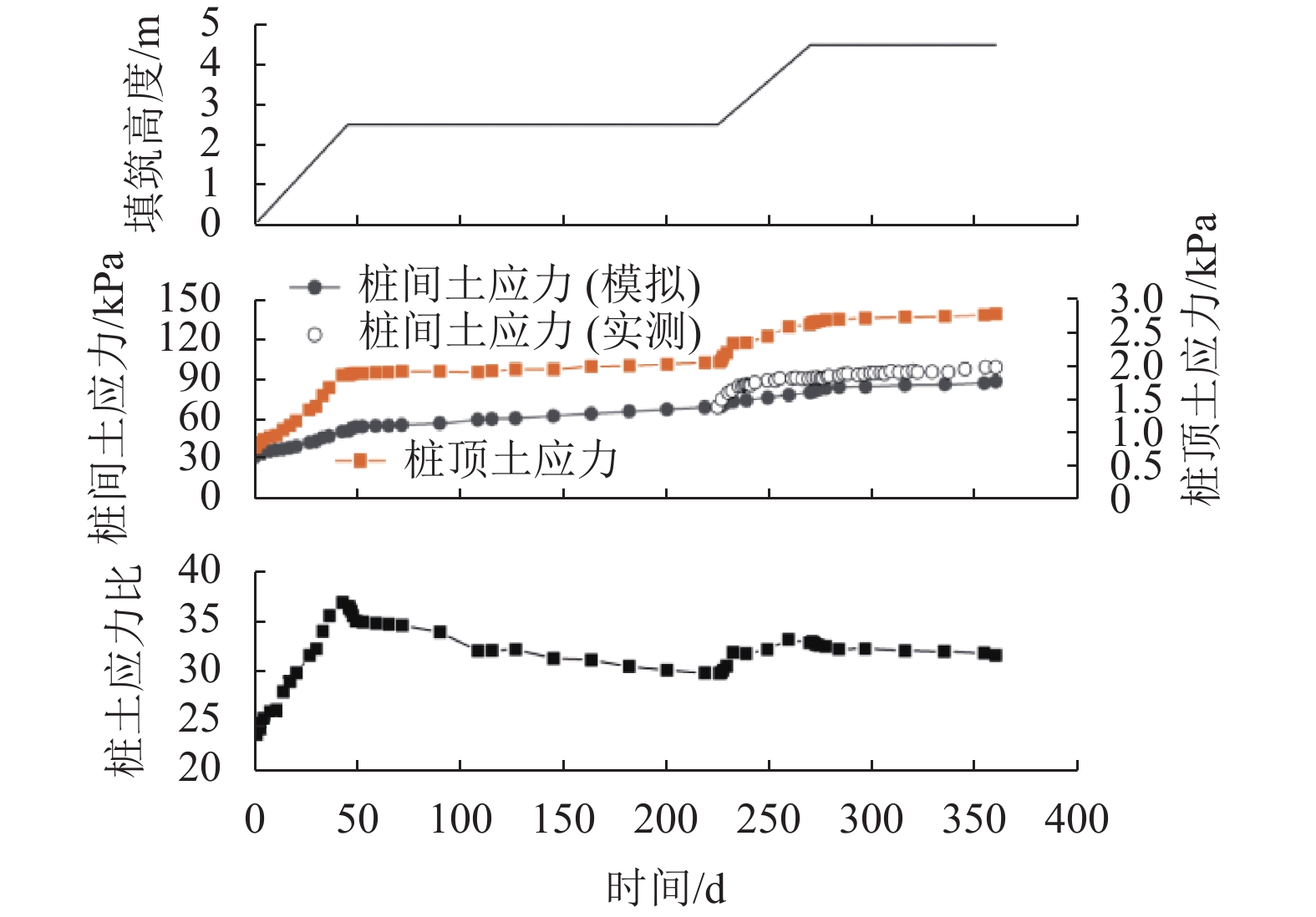
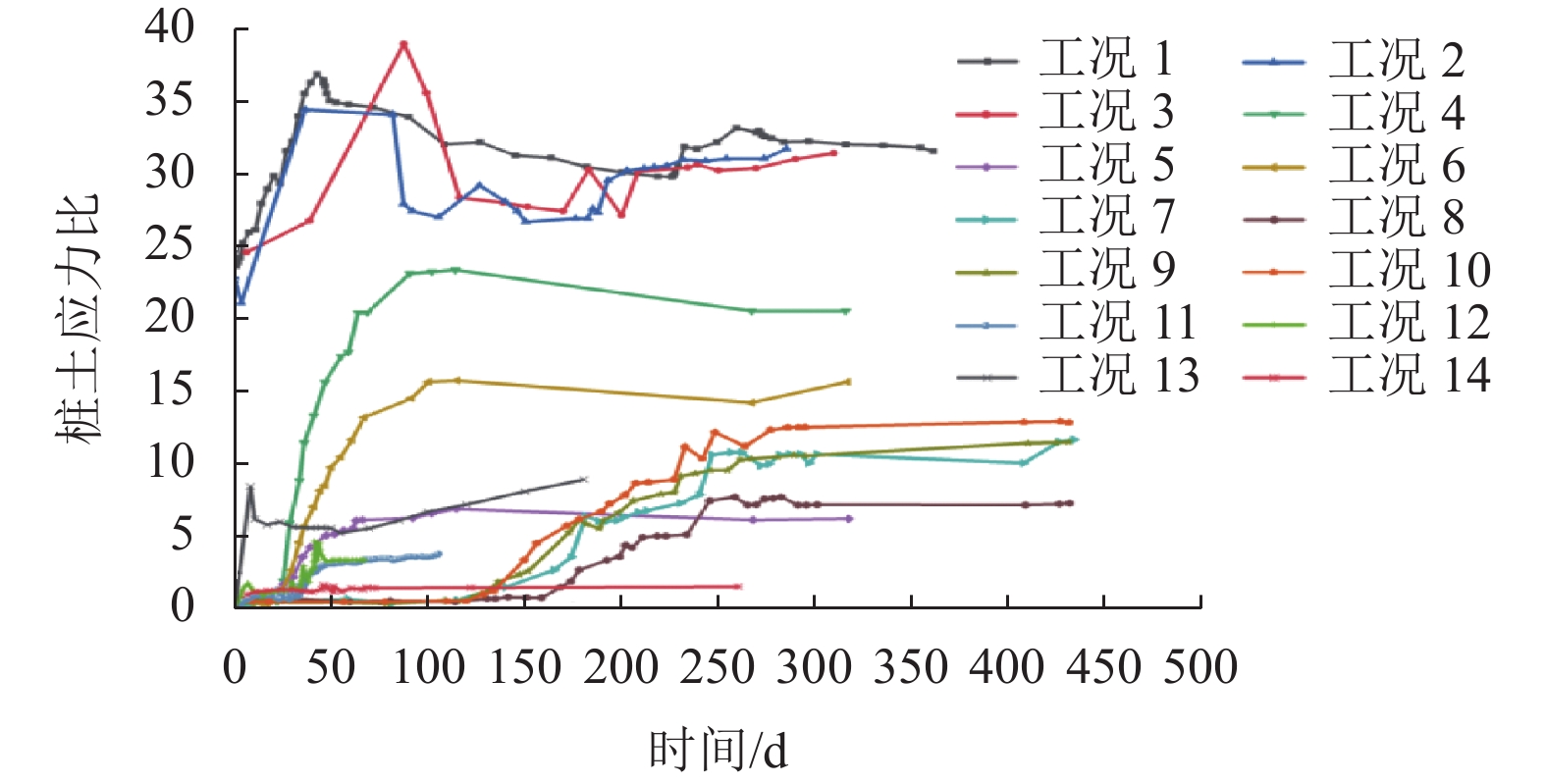
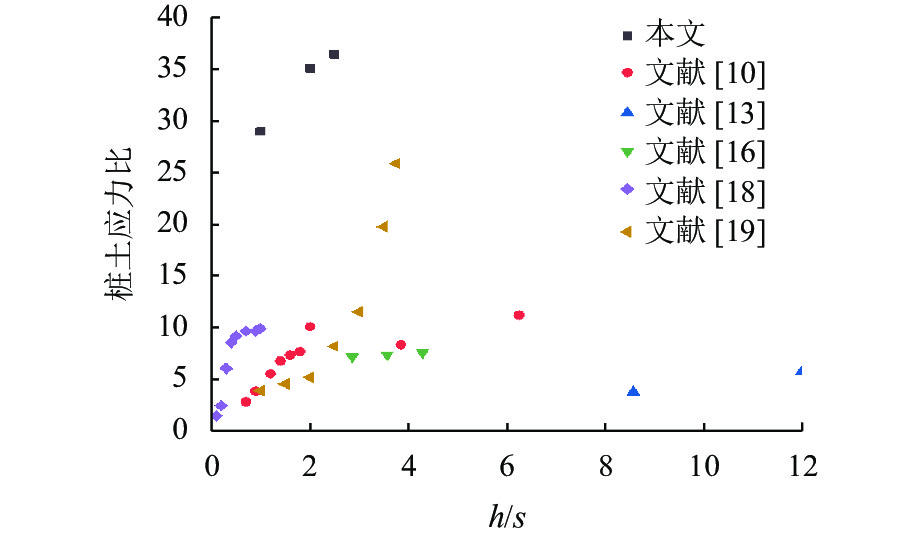
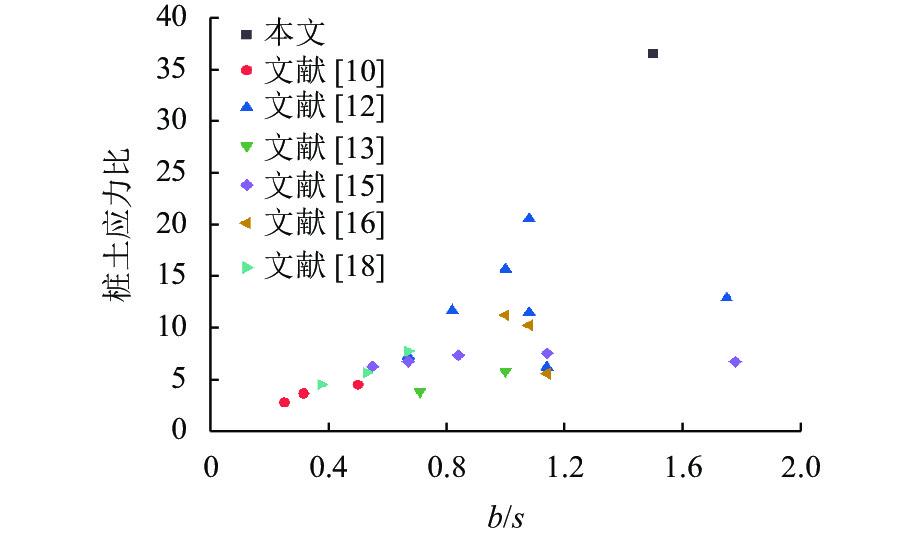
 百度学术
百度学术



